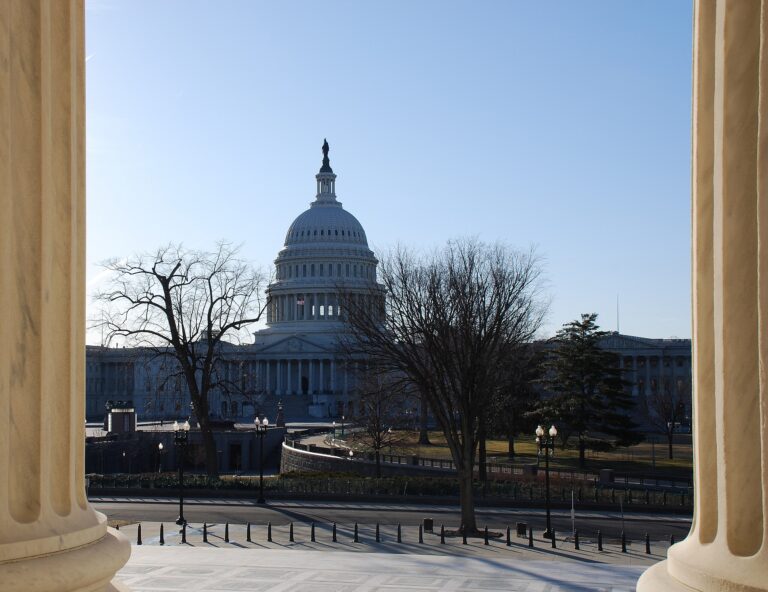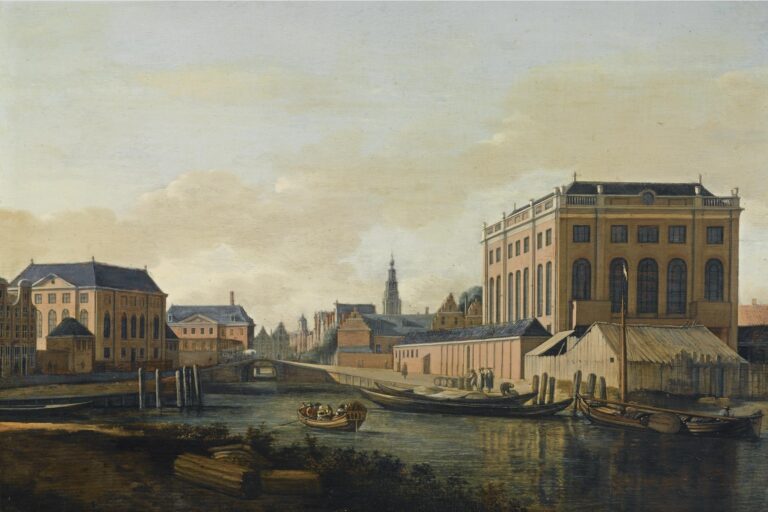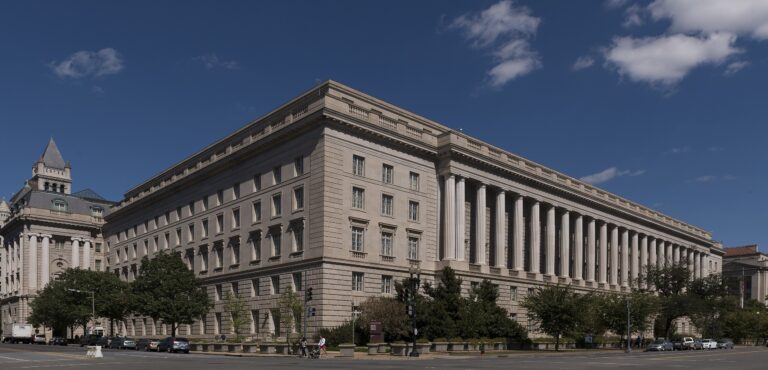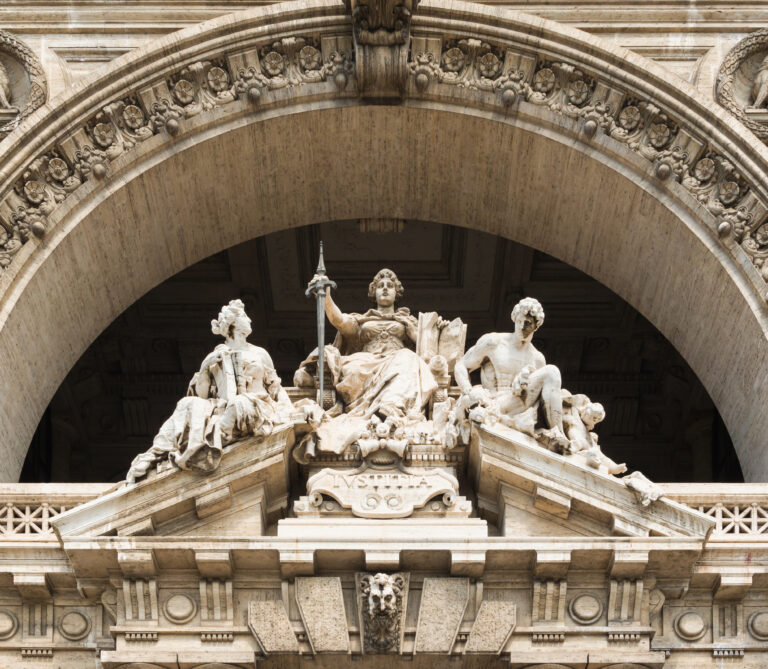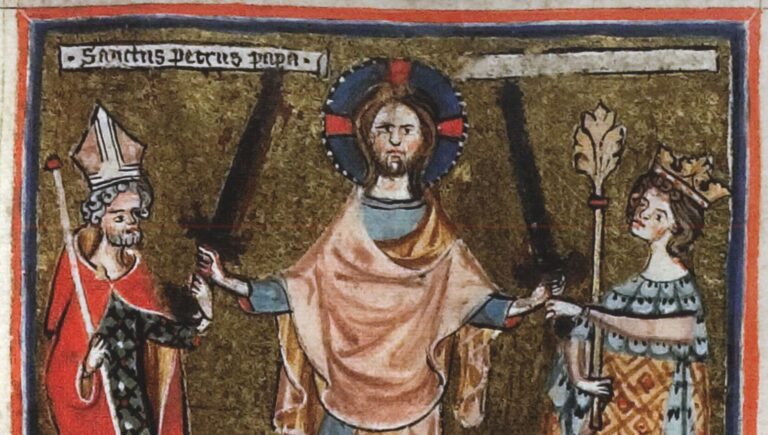
Teaching the Ten Commandments and Bible in Public Schools is about Race and History, Not Just the First Amendment
Leslie Ribovich
Image of Ten Commandments outside of Stephens County Courthouse from WikiMedia (CC BY-SA 4.0).
It’s already back to school time, and while students in Louisiana and Oklahoma may notice that the Ten Commandments and Bible are now in their classrooms and curricula, religion has always been part of the structure of public schools in the United States, especially when it comes to race.
Over summer break, multiple states have legislated how they represent religion in public schools. In May, the Texas Education Agency proposed new curriculum guidelines that include lessons about biblical stories and figures. In mid-June, Louisiana Governor Jeff Landry signed into law House Bill 71, which requires the Ten Commandments to be posted in all public school classrooms. And, at the end of June, just days after the Oklahoma Supreme Court blocked state funding for a religious charter school, State Superintendent Ryan Walters sent a memo ordering public schools “Immediate and strict compliance” to “compulsory” teaching of the Bible “as an instructional support into the curriculum” for grades 5-12.
In response, some have argued that the 2022 US Supreme Court case Kennedy v. Bremerton School District opened the door for arguments that religious practices could be permitted in public schools by rejecting the Lemon test, which required that activities neither advance nor inhibit religion. The ACLU and others have argued that HB71 “violates the separation of church and state and is blatantly unconstitutional,” filing a lawsuit a few days later. Other observers have pointed out the behind-the-scenes workings of right-wing Christian organizations and called recent changes “textbook Christian nationalism.”
While Kennedy, right-wing organizing, and contemporary Christian nationalism are partly responsible for these latest efforts, saying that religion should not be in public schools is a weaker argument than saying that these efforts are authoritarian. Shifting arguments away from the “religion should not be in public schools” argument is not to support theocratic public education, but rather to think historically and honestly about religion, law, and public education by acknowledging that these efforts are Christian and take them seriously as religion.
Why is it unhelpful to say that religion should not be in public schools?
First, that argument must define the term “religion,” but most versions of it rely on the courts’ definitions, which generally exclude people who are not white and Christian. Courts favor those who can demonstrate they are “sincere believers,” which is a Protestant understanding of religion. Moreover, European colonists and enslavers popularized “religion” to distinguish their own Christian practices from those of people they encountered around the world. While the Establishment Clause of the First Amendment claims to protect against the establishment of a particular religion, the courts’ definitions of religion have led to the erosion of protecting the public and religious minorities from domination and coercion.
Second, as Protestant morality shaped the structure of common schools (the predecessor to today’s public schools), they have become sites for imprinting and creating new religious and moral forms. Horace Mann (in)famously founded common schools for the cultivation of white, Protestant male citizens as an alternative to Catholic schools. But these practices were always contested, and often discriminatory, against both racial and religious minorities. In my new book Without a Prayer: Religion and Race in New York City Public Schools, I use New York City as a window into a national story to show how religious and moral ideas undergirded school policies and practices on race before and after the US Supreme Court found school prayer and Bible-reading unconstitutional in the early 1960s. I show that imagining new prospective worlds through public schools continued in the mid-twentieth century. In New York, Protestants, Catholics, and Jews crafted curricula on moral and spiritual values by incorporating Catholic and Jewish textual practices to teach a white Protestant version of US history. This was happening while the city’s Board of Education framed racial integration as part of its moral tradition but failed to desegregate schools. Drawing on Protestantism, Catholicism, Pan-African theologies, and other resources, some Black and Puerto Rican New Yorkers supported integration in public schools, while others organized around community control of schools. Although these portraits differed, many saw public schools as sites to redeem their communities’ futures.
Third, removing religion from public schools is a losing argument because it obscures that public schools require constituents to ask: who are we as a civic collective? Who do we want to be? How do we account for the injustices in this country broadly and the public school system specifically? Public schools do moral work whether we want them to or not. They occasion democratic exchange about these very questions, and not just from the right. Take Courtney E. Martin’s discussion of the moral arguments she heard as she sent her white daughter to a predominantly Black neighborhood school, Stephanie Mota Thurston’s research on democratic formation in the classroom, Nikole Hannah-Jones’s consideration of choosing a school for her Black daughter in a segregated city, analysis of schools’ difficulties accommodating Muslim students during Ramadan (in Louisiana, in fact), or David Labaree’s treatment of the struggle over educational goals in the United States. We should make robust moral claims about what education can be, and from varied religious, moral, racial, and historical perspectives. If we exclude significant sources of moral claims from our conversations, how can we?
It might seem dangerous to let go of the “no religion in public schools” argument. And 1960s New York City might seem a world away from present-day Louisiana, Oklahoma, and Texas. Yet, they’re part of the same story of religion and race in public schools, one where religion is not something that can be inserted into or removed from the structure of public education with the decision of a judge or signature of a governor. When school officials talk about religion as part of national history, they are often using it to talk about white U.S. history and bolster discriminatory practices against students of color. If we pivot to say that, yes, religion and moral formation have always been part of public schools, then we can see that the important point is how religion and moral formation fit in a broader project of white supremacy.
Religion is where we start, not where we end, our critique. Christian nationalism isn’t scary because it’s politics masquerading as religion, or simply because it’s religious; it’s scary because it values white lives more than others. We have to understand religion to understand this, and education debates provide useful examples.
When a project of moral formation is sponsored by the state, we can look at statements and policies to understand what state officials take to be moral and what kinds of people they want to make. For instance, Walters, who has made controversial comments dodging questions on critical race theory and the Tulsa Race Massacre, connected teaching history to forming children’s morality. He called the Bible “one of the most historically significant books and a cornerstone of Western civilization, along with the Ten Commandments” and his mandate “a crucial step in ensuring our students grasp the core values and historical context of our country.”
The Louisiana law is another clear example of the state taking a role in moral formation. The law requires a biblical passage to be displayed, at minimum, “on a poster or framed document that is at least eleven inches by fourteen inches,” and “The text of the Ten Commandments shall be the central focus” and “printed in a large, easily readable font.” They’re state-approved lessons on how to behave. HB71’s author, the Republican Louisiana State Representative Dodie Horton (also the author of the state’s “Don’t Say Gay Bill”), even called them a “moral code.”
The bill offers a very specific “moral code.” Although it claims the Commandments “represent a ‘common cultural heritage’” and cites a Supreme Court case permitting the display of the Ten Commandments on government property, Louisiana joins longstanding efforts to use the Commandments to promote specific biblical moralities. The law’s version of the Ten Commandments in Exodus 20 are edited from the King James Version, a polemically Protestant 17th-century translation that connects the bill to the earliest days of the colonies (and in a heavily Catholic state). In fact, as Andrew Seidel pointed out earlier this year, this version was first introduced in 1955 by Cecil B. DeMille and the Fraternal Order of the Eagles in an effort to promote the director’s upcoming film, The Ten Commandments. Other versions have key differences. For instance, the Jewish Bible reads “thou shall not murder,” or “Do Not Murder,” rather than “thou shalt not kill,” based on the Hebrew verb lirtzoach.
Therefore, HB71 is striking not just because its creators blatantly enter constitutional debates (“I can’t wait to be sued,” quipped Landry), but because the bill situates the Ten Commandments in a white, Christian vision of US history. The bill lists the commandments among “other historically significant documents,” which include the Mayflower Compact, the Declaration of Independence, and the Northwest Ordinance.
In Without a Prayer, I show that the Regents’ Prayer, the prayer at issue in 1962’s Engel v. Vitale, which found state-sponsored school prayer unconstitutional, participated in a larger curricular movement to form what states called a universal “Judeo-Christian” morality through social studies and other curricula (this language is still around: Walters said Oklahoma promotes “Judeo/Christian values”). These programs uplifted the early American men often called the “Founding Fathers” as God-like figures to emulate and revere, without mentioning their or the country’s participation in the Atlantic Slave Trade or the destruction of Indian land. It was no accident that schools created such programs amidst demographic changes and desegregation directives.
In a contemporary retaliation, Louisiana, Oklahoma, and Texas join the backlash to the 1619 Project and teaching of the history of race in public schools by codifying a white, Christian view of history (and in Louisiana, on the recently recognized federal holiday Juneteenth commemorating the end of slavery in the United States, no less). In 2021, Landry was among the state attorney generals to sign a letter to the Department of Education rejecting Critical Race Theory and the 1619 Project (which itself offers a civic American morality).
In a state where a majority of public school students are students of color and with a notable history of school segregation and school-to-prison pipeline, who do the Louisiana authorities think needs to submit to the Ten Commandments, and who sees themselves in them? Or in Oklahoma, if in Walter’s view, white students can learn about the Tulsa Race Massacre but should not have to think about their own race today, are white students being taught to see themselves as already following the biblical stories they will learn, as heirs to the legacy of the “Founding Fathers”? And, do the Commandments and Bible threaten Black and Latinx students, who may know all too well what happens when they do not respect authority?
Critics of the law shouldn’t be concerned about whether it’s religious or not, but rather with whether and how it’s discriminatory. This has everything to do with a white Christian view of US history. Today’s proponents of this view have a contemporary flair, but we’re paying attention to the wrong thing if we land on the point that their view is Christian, and we’re naive if we think Christianity in public schools is new. As my book shows, people who fall under the broad umbrella of “Christian” have supported everything from Black liberation in, to white flight from, public schools. Moreover, people from varied religious backgrounds have sought to imagine their futures through public schools specifically and education more broadly. The issue is that today’s proponents of Christianity in public schools promote a version of US history that minimizes the brutalities slavery and colonialism inflicted on people of color in the name of creating white national hero-saviors (at the same time that they erode trans rights–Landry signed an anti-trans education bill on the same occasion he signed HB71). Rather than argue that states are bringing sectarianism or religion into the public schools, critics should focus on how religious ideas and texts are being used in legislation to discriminatory ends in an authoritarian approach to moral formation. ♦

Leslie Ribovich is the Director of the Greenberg Center for the Study of Religion in Public Life and Associate Professor of Religious Studies and Public Policy & Law at Trinity College in Hartford, CT. She is the author of Without a Prayer: Religion and Race in New York City Public Schools.
Recommended Citation
Ribovich, Leslie. “Teaching the Ten Commandments and Bible in Public Schools is about Race and History, Not Just the First Amendment.” Canopy Forum, September 05, 2024. https://canopyforum.org/2024/09/05/teaching-the-ten-commandments-and-bible-in-public-schools-is-about-race-and-history-not-just-the-first-amendment/.
Recent Posts



